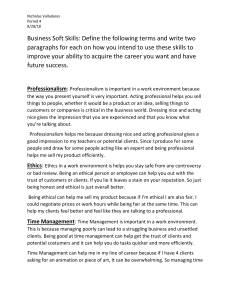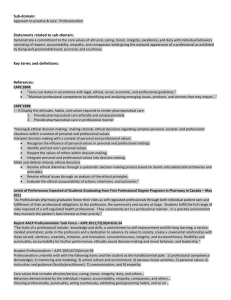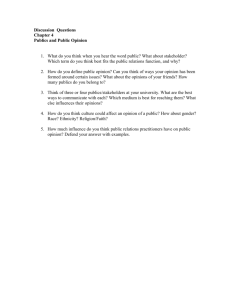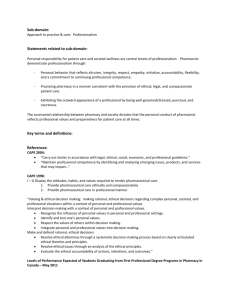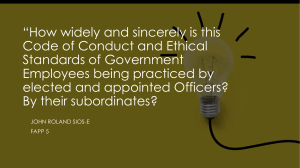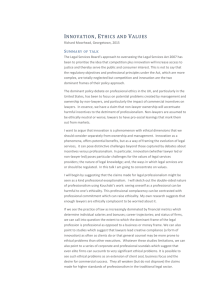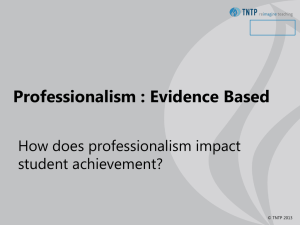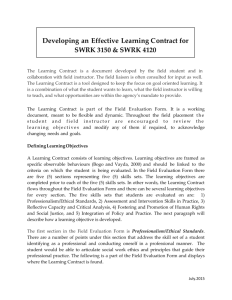JCO 2201 INTRODUCTION TO PUBLIC RELATIONS COURSE
advertisement
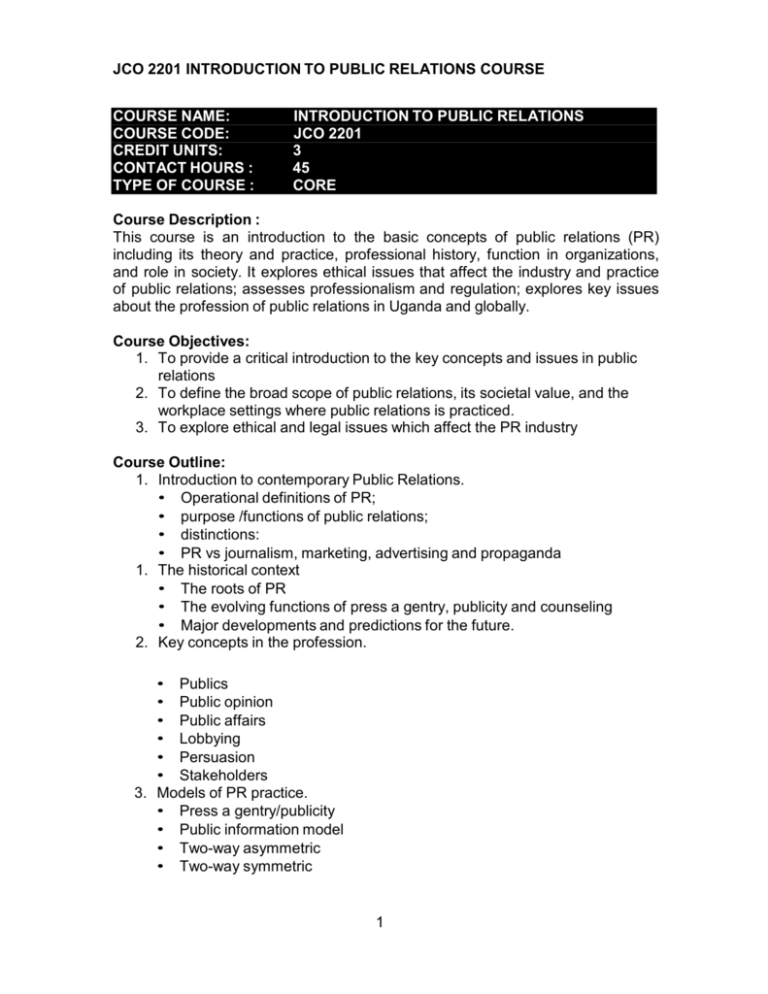
JCO 2201 INTRODUCTION TO PUBLIC RELATIONS COURSE COURSE NAME: COURSE CODE: CREDIT UNITS: CONTACT HOURS : TYPE OF COURSE : INTRODUCTION TO PUBLIC RELATIONS JCO 2201 3 45 CORE Course Description : This course is an introduction to the basic concepts of public relations (PR) including its theory and practice, professional history, function in organizations, and role in society. It explores ethical issues that affect the industry and practice of public relations; assesses professionalism and regulation; explores key issues about the profession of public relations in Uganda and globally. Course Objectives: 1. To provide a critical introduction to the key concepts and issues in public relations 2. To define the broad scope of public relations, its societal value, and the workplace settings where public relations is practiced. 3. To explore ethical and legal issues which affect the PR industry Course Outline: 1. Introduction to contemporary Public Relations. • Operational definitions of PR; • purpose /functions of public relations; • distinctions: • PR vs journalism, marketing, advertising and propaganda 1. The historical context • The roots of PR • The evolving functions of press a gentry, publicity and counseling • Major developments and predictions for the future. 2. Key concepts in the profession. • Publics • Public opinion • Public affairs • Lobbying • Persuasion • Stakeholders 3. Models of PR practice. • Press a gentry/publicity • Public information model • Two-way asymmetric • Two-way symmetric 1 4. Practitioners of PR • The individual in PR • Job opportunities • Roles • Requirements for success 5. Organizational context of PR • The role of public relations departments • Organization of PR departments • Line and staff functions • PR in various organizational structures/departments • PR firms/consultants 6. Public Relations and the law • Corporate/employee free speech • Lobbying • Commercial speech • Libel and defamation • Invasion of privacy • Insider trading • Copyright and trademark law 7. • • • • • • • • Professionalism and regulation What is professionalism? Ethics Codes of practice Training Licensing and accreditation Ethics in individual practice Social accountability Ethical dealings with key publics (media, investors etc) Learning Outcomes: By the end of the course, the student will: 1. Have a firm grasp on what PR is, how it has evolved, and its role in organizations and society. Method of Teaching/Delivery: • Lectures • Seminar presentations • Case studies • Class discussions • Independent readings • Guest lectures 2 Assessment Methods: • Coursework of at least 2 assignments will constitute 40%• will account for 60% Final examination Readings/Reference Materials/Learning Resources: • Dennis L. Wilcox, Philip A. Ault, Warren K. Agee, Glen T. Cameron (2003). Public Relations Strategies and Tactics”: Longman, New York. • Doug Newsom, Judy V. Turk, Dean Kruckeberg (1996). This is PR. The Realities of Public Relations. Wadsworth Publishing Company. London. • Erica Weintraub, Bruce E. Pinkleton (2001) Strategic Public Relations Management: Lawrence Erlbaum Associates, New Jersey • Haywood Roger (1991). All About Public Relations: How to Build Business Success on Good Communications. The McGraw-Hill Companies: London. • Howard, W (ed) (1989). The Practice of Public Relations Butterworth/Heimemann. Oxford. • Jaccquie L’Etang (2009) Public Relations Concepts, Practice and Critique: Sage, London • Scot M. Cutlip, Allen H. Center, Glen M. Broom (2006) ( 9thed). Effective Public Relations: Prentice Hall, New Jersey 3
